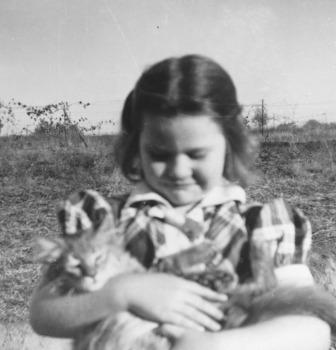Maybe a failure to communicate

Around this time of year, I am reminded of the many misperceptions about feline behavior. There is always a sharp increase in black cats ending up in shelters or on the street, victims of cruel human habits. All through the year, black cats and dogs are the last to be adopted and most often euthanized. Cats seem to be painted with the broad brush of malevolence regardless of the season, largely because they are misunderstood.
To begin to understand the so-called mysterious ways of cats, we first need to understand how much they are like us. A cat’s brain is more similar to a human’s than that of a dog, and the part of the brain that controls emotion is very similar. Cats’ complexity in many ways mirrors that of children. The average adult cat is about the size of a human baby, and cats can make as many as 100 different sounds, many of which mimic a child’s before speech.
Every cat has sounds for specific occasions. They do not “meow” to each other. It seems that cats develop a speech pattern aimed at opening the lines of communication with their humans. And they continue to add and subtract sounds as they grow, to accommodate our lack of comprehension.
All three of my boys have different vocal repertoires, from yelling in my ear to little mews or meeps. Every day I need to try to figure out what they are talking about. The more I talk to them, the more they talk to me—and that is not just a crazy cat lady talking, but the result of years of experience.
Cats have many behaviors that do not make a bit of sense to us. I do not know of any cat owner who has not seen their cat suddenly turn into a crazy ninja, running and twisting, bouncing off the walls, and then suddenly stop. This is a natural way for cats to burn off excess energy. As predators, they are designed for short spurts of energy followed by long recovery. If we do not provide them with daily exercise, they will find a way to drain their batteries so they can get their 16 hours of sleep—after a trip to the facilities, of course, and a nosh at the buffet.
In their seeming states of unconsciousness, cats are hardly unaware of what is going on. My boys can dart from a sound sleep under the bed in two seconds flat if I go within three feet of their treat drawer in the kitchen. A cat’s sense of hearing is that keen. We feeble humans often think they have lost their minds when they streak to the window to try to find the origin of a sound.
Cats’ visual acuity is specifically designed for hunting. They are farsighted, so they may not see a toy under their noses, but will rush to the wall to try to catch an ant climbing toward the ceiling. Once honed in on a prey, a cat can leap to five times its body length to get at it. Sometimes it turns out to be a speck, but that is no matter to the cat.
They also have very good memories. If a sound or action startles or hurts them, they will react quite strongly if it recurs. It is wise to not take such things personally when adopting an older cat. But it is also wise to avoid pulling the trigger, or you will undoubtedly end up with a behavior problem.
I am generally glad to take the time to learn what each of my cats is trying to say. They try, in their way, to let us know what bothers them, and it makes for a much happier home. Just as with humans, taking the time to try to understand each other creates a much better chance of gaining a friend than relying on hearsay, rumor, and superstition.
Kat Brown of Albuquerque is a lifelong animal-lover, especially of cats. Share your cat stories or comments at katskorner88@gmail.com.
